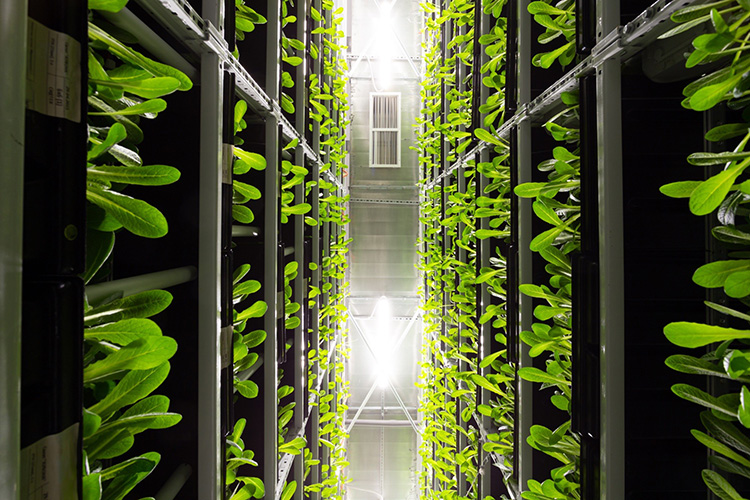Report on Canadian Lentil Production and its Role in Sustainable Development Goals
1. Production Outlook and Contribution to SDG 2 (Zero Hunger)
A significant increase in Canada’s lentil production is anticipated, bolstering its capacity to contribute to global food security, a core tenet of SDG 2 (Zero Hunger). Lentils, as a vital source of plant-based protein, are crucial for nutritional security worldwide. Projections from the 2025 Pulse and Special Crops Convention indicate a robust harvest.
- Baseline Forecast: Mercantile Consulting Venture projects production at 2.75 million tonnes, based on an average yield of 1,385 pounds per acre.
- High-Yield Scenario: Industry experts, including representatives from AGT Foods and Simpson Seeds, suggest that yields could approach or even surpass the 2013 record of 1,850 pounds per acre, potentially leading to a much larger total crop.
- Crop Quality: The quality of the 2025 crop is exceptionally high, with most of it grading No. 2 or better. The proportion of No. 1 large green lentils is estimated at 12 to 15 percent, significantly higher than the typical 5 to 8 percent. This high quality enhances its value for international markets that support food security initiatives.
2. Supply Chain Analysis and Alignment with SDG 12 (Responsible Production and Consumption)
The management of Canada’s lentil supply chain reflects key principles of SDG 12, focusing on sustainable production patterns. The increased volume necessitates careful management of stocks and distribution to ensure minimal waste and efficient market delivery.
- Production Breakdown (Forecast):
- Red Lentils: 1.46 million tonnes
- Medium/Large Green Lentils: 835,000 tonnes
- Small Green Lentils: 393,000 tonnes
- Total Supply and Stocks: Total available supply is estimated at 3.6 million tonnes. Ending stocks are forecast to rise to 914,246 tonnes from 549,000 tonnes in the previous crop year, indicating a healthy carryout that can help stabilize global supply.
3. Global Trade, Competition, and Implications for SDG 8 & SDG 17
Canada’s role in the global lentil market is facing new challenges, impacting its economic performance under SDG 8 (Decent Work and Economic Growth) and its trade relationships under SDG 17 (Partnerships for the Goals). While production is high, maintaining market share requires competitive strategies and robust international partnerships.
- Export Performance: Exports for the 2024-25 crop year were 1.84 million tonnes, with a notable slowdown from February onward. Key markets included India, Turkey, and the United Arab Emirates.
- Declining Market Share: Canada is losing its competitive edge in key destinations.
- India: Market share fell to 49% in early 2025, down from 82% in 2019.
- Turkey: Market share dropped to 47% in early 2025, compared to 82% in 2020.
- Increased Global Competition: Other nations are increasing production, intensifying competition.
- Australia: Forecast to produce 1.7 million tonnes, up from 1.29 million.
- Russia & Kazakhstan: Combined production is expected to reach 500,000 tonnes, up from 390,000.
4. Current Market Challenges and Future Considerations
Several market and logistical factors present challenges to the sustainable economic viability of the Canadian lentil sector and the efficiency of the global food supply chain.
- Pricing and Grower Sentiment: Canadian growers are reportedly hesitant to sell at current price levels. Analysts believe red lentil prices may have bottomed out after significant initial sales post-harvest.
- Logistical Hurdles: A major challenge impacting global partnerships (SDG 17) and the timely delivery of food (SDG 2) is extended shipping times. Container transit to the Indian Subcontinent has increased from 40-50 days to 120-130 days, creating significant delays in the supply chain.
- Market Outlook: The market’s direction in the latter half of the year will be influenced by the Australian harvest, the selling behavior of Australian growers, and weather conditions in India.
Analysis of Sustainable Development Goals in the Article
1. Which SDGs are addressed or connected to the issues highlighted in the article?
-
SDG 2: Zero Hunger
- The article’s central theme is the production and supply of lentils, a key food staple and protein source for many parts of the world. It discusses crop size (“2.75 million tonnes of production”), yield (“1,385 pounds per acre”), and exports to major consumer nations like India, Turkey, and the United Arab Emirates. This directly relates to ensuring a stable global food supply and promoting sustainable agriculture.
-
SDG 8: Decent Work and Economic Growth
- The article covers the economic aspects of the lentil industry, which is a significant contributor to Canada’s agricultural economy. It details production values, market prices (“red lentil prices have bottomed out”), trade volumes (“Exports for the 2024-25 crop year were a disappointing 1.84 million tonnes”), and competition. This highlights the goal of achieving higher levels of economic productivity in a key sector.
-
SDG 17: Partnerships for the Goals
- The text is heavily focused on international trade, a key component of global partnerships. It analyzes Canada’s role as a major exporter and its competitive position against other producers like Australia, Russia, and Kazakhstan. The discussion of declining market share in India and Turkey (“Canada is losing its competitiveness in key export markets”) directly addresses the dynamics of global trade systems.
2. What specific targets under those SDGs can be identified based on the article’s content?
-
Under SDG 2 (Zero Hunger):
- Target 2.1: By 2030, end hunger and ensure access by all people, in particular the poor and people in vulnerable situations, including infants, to safe, nutritious and sufficient food all year round. The article’s focus on the large-scale production and export of lentils, a nutritious food source, contributes to the global food supply aimed at meeting this target.
- Target 2.3: By 2030, double the agricultural productivity and incomes of small-scale food producers… The article discusses efforts to increase agricultural productivity through higher yields, with one analyst suggesting yields “could match the 2013 record of 1,850 lb.” This directly relates to improving productivity.
- Target 2.4: By 2030, ensure sustainable food production systems and implement resilient agricultural practices that increase productivity and production… The article’s mention of a large and high-quality crop (“the crop is No. 2 or better for the most part”) implies the use of productive and effective agricultural practices.
-
Under SDG 8 (Decent Work and Economic Growth):
- Target 8.2: Achieve higher levels of economic productivity through diversification, technological upgrading and innovation… The high yields and quality of the lentil crop discussed in the article are outcomes of productive agricultural practices, which contribute to the overall economic productivity of this sector.
-
Under SDG 17 (Partnerships for the Goals):
- Target 17.11: Significantly increase the exports of developing countries, in particular with a view to doubling the least developed countries’ share of global exports by 2020. While Canada is a developed country, the article’s entire discussion revolves around the principles of international agricultural trade, market access, and export competitiveness. It analyzes Canada’s export volumes (“1.84 million tonnes”) and its changing share of global markets, which is the central theme of this target.
3. Are there any indicators mentioned or implied in the article that can be used to measure progress towards the identified targets?
-
Indicators for SDG 2:
- Agricultural Yield: The article explicitly provides data on crop yield, such as the forecast of “1,385 pounds per acre” and a potential high of “1,850 lb.” This is a direct measure of agricultural productivity (relevant to Target 2.3).
- Production Volume: The article quantifies total production (“forecasting 2.75 million tonnes of production”) and breaks it down by lentil type (“1.46 million tonnes of reds”). This measures the output of food production systems (relevant to Target 2.4).
- Food Supply/Stocks: The article mentions “Total supply will be 3.6 million tonnes” and forecasts “Ending stocks… at 914,246 tonnes.” These figures are indicators of food availability and stability.
-
Indicators for SDG 17:
- Export Volume: The article provides a specific figure for exports: “1.84 million tonnes.” This is a key indicator for measuring trade performance.
- Share of Global Markets: The article uses market share percentages as a direct indicator of trade competitiveness. For example, it states Canada’s “share of the Indian market fell to 49 per cent… compared to 82 per cent” and its “share of the Turkish market plunged to 47 per cent… compared to 82 per cent.” This directly relates to measuring a country’s position in global exports (relevant to Target 17.11).
- Trade Logistics Efficiency: An implied indicator is the efficiency of trade routes. The article notes that “transit times for containers have become a ‘killer,’… taking 120 to 130 days to get product to the Indian Subcontinent when it used to take 40 to 50 days.” This measures a barrier to efficient international trade.
4. Summary Table of SDGs, Targets, and Indicators
| SDGs | Targets | Indicators |
|---|---|---|
| SDG 2: Zero Hunger |
|
|
| SDG 8: Decent Work and Economic Growth |
|
|
| SDG 17: Partnerships for the Goals |
|
|
Source: producer.com







